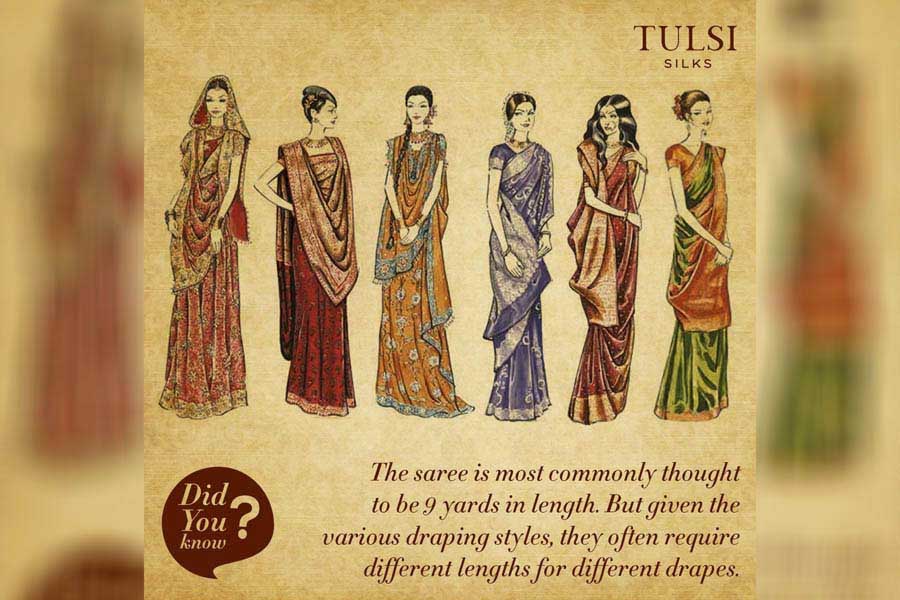Different drapes for different moods!
Different drapes for different moods!
Why wear the saree in the same old manner always when there are so many drapes to choose from?
The versatile garment can also be worn in myriad ways – apart from the basics pinned-up and neatly-pleated style and the open pallu drape.
We have picked out some of the popular and not-so-popular, trendy and traditional ways in which the saree can be fashioned.
Contemporary techniques
- Lehenga style: This is a big rage among youngsters today for its simple tuck-and-drape method. If you do not want to splurge on a lehenga, but still crave that lavish look for your best friend’s wedding, here’s an easy way to turn a saree into a lehenga. Start from the right and go back, tucking in several small pleats around the waist to give the saree an illusion of a lehenga. In an instant!
- Mermaid style: The lower part of the saree is draped like a skirt to give a slim and tall look along with a curvy appearance around the hip. In this style, there are no pleats in the front. As the name suggests, the drape gives you a mermaid-like look. This stylish drape is best suited for sarees with a heavy pallu or an embellished border. So, pep up the evening do with this mermaid variant.
- Butterfly drape: Keep the pallu thin so that the midriff or navel is visible. Popular among Bollywood fashionistas, this style goes well with netted fabrics and Chiffon. Pair up the saree with a heavy brocade blouse for a stunning result. Rock the party with the butterfly effect!
- Indo-western pant style: In this, you can wear the saree around ankle-length leggings or pants, instead of the conventional petticoat.
Traditional drapes
- Maharashtrian style: If you want to stand out in a crowd like Sonam Kapoor, who popularised the Maharashtrian dhoti saree, this one is for you. Worn like a dhoti, this style requires a longer saree—nine yards instead of the usual six (hence it is called the Nauvarisaree). You don’t need a petticoat with this; wear shorts instead. The drape goes well with silk, cotton, and silk cotton sarees . Opt for a Paithani saree for an opulent feel.
- Set-mundu style: This traditional attire of Kerala consists of a mundu or lower garment and an upper piece called neriyathum. The mundu is wrapped around the lower part of the body and tucked at the waist; the neriyathum is draped in the upper part over the blouse. Try the festive Kasavuset-mundu(a handwoven cream-coloured saree with gold border) the next time you are invited to an Onam sadya.
- Bengali style: This is not as hard as it looks or sounds and involves two wide pleats with a key ring to hold a double-wrapped pallu. Perfect for summer with light handloom cotton sarees!
- And many more: Kacchanivi of Andhra Pradesh (pleats are passed through the legs and tucked into the waist at the back), the Coorgi style (front pallu tucked over the shoulder and pleats pushed back), and the Rajasthani and Gujarati drapes (pallu draped across the right shoulder).
So, go ahead and experiment; mix styles if you wish to. Add your own chutzpah and you are good to go!
Note: This blog gives you the basic lowdown of the various saree styles. For detailed step-by-step instructions, do watch videos and tutorials online.




